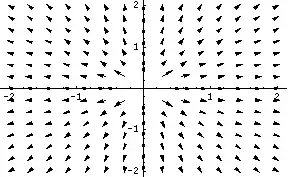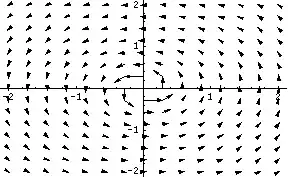Let's say that we want to make sense of integrating a function $f: \mathbb{C}\rightarrow\mathbb{C}$ over some path $\gamma$. I can imagine two reasonable ways of doing it. First, there's the way that we all know and love: $$\int_\gamma f := \int_a^b f(\gamma(t))\gamma'(t)\,dt$$ where $\gamma(t)$ parametrizes $\gamma$.
Alternatively, we could say, "We already have a nice formulation of line integrals for paths in $\mathbb{R}^n$, and $\mathbb{C}$ is essentially just $\mathbb{R}^2$." So we decide that we'll define the path integral like this: $$\int_\gamma f := \int_a^b f(\gamma(t))|\gamma'(t)| \,dt$$ like we might do for functions $f: \mathbb{R}^2 \rightarrow \mathbb{R}$. This second definition has the nice property that $\int_\gamma f = \int_\gamma \text{Re}f + i \int_\gamma \text{Im}f.$
But of course we don't use the second formulation. We stick with the first, and there are some nice utilitarian reasons for doing so (Cauchy's integral formula, etc.). But are there more natural (geometric, preferably) reasons for using the first definition above?
EXAMPLE
For a simple example, let's say that $f(z) = i$ and I want to integrate $f$ along $\gamma$, the line from $0$ to $i$. I'll choose the parametrization $\gamma(t) = it$, $t \in [0,1]$. Then $\gamma'(t) = i$, and, using the first definition for our path integral, we get: $$\int_\gamma f = \int_0^1 i \gamma'(t) \,dt = \int_0^1 i^2\, dt = -1.$$
Meanwhile, in the wayward world where we choose the second formulation for our path integrals, we have: $$\int_\gamma f = \int_0^1 i |\gamma'(t)| \,dt = i.$$ In essence, this second computation didn't care about the complex structure on $f$'s domain. As far as this method was concerned, we integrated a constant function over a path of measure 1, so naturally we get that constant as our answer. On the other hand, in the first computation, multiplying by $\gamma'$ carries some additional complex structure. It knows the difference between integrating along lines from $0$ to $i$ or from $0$ to $1$, for example.
Heuristically, it seems like the first definition allows the complex structures on $f$'s domain and range to interact (through the $\gamma'$ term), whereas the second definition neglects any complex structure on the domain of $f$ and is only concerned with stretching/reorientation caused by our choice of parametrization. But why, a priori, are we interested in allowing $f$'s complex domain and range to interact in this way (if that's even the right way of framing it)? Does this "interaction" have a geometric interpretation? And is there a nice way of interpreting the line integral that makes the first definition obviously the more natural choice, or do we just go with it because it's useful?
Thanks for reading!

